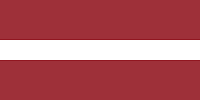A Country Is Only As Strong As Its People
Let's first establish that despite the hardship and downright misery the people and brewing industry in North Eastern Europe have endured over the centuries, the people, culture, and lifestyle are still genuine to the way things have always been: true to a storied and proud heritage. But as is the way with global conflict and politics, this way of life has been challenged time and time again over the course of history. Much like other Eastern European countries Estonia, and Poland, Latvia was occupied by the Soviets for much of the 20th century. A Baltic State, Latvia shares much of its history with it's neighbors Estonia and Lithuania. The three Eastern Bloc countries were once controlled by Nazi Germany until the events surrounding the end of World War II. They all gained their independence from the USSR together in the Singing Revolution from 1987, to 1991. And while they were all hit particularly badly by the recent global recession, they have all recovered and became some of the fastest growing economies in Europe. And this rule very much applies to the story of brewing in Latvia. The first known examples of beer were of course concocted by native tribes. This original tribal beer culture was then heavily influenced by Germany during the conquest in the 14th century. For this reason, preferred Latvian beer styles are mostly of German origin, but some others listed below are native to the Baltic region. Like Ireland and The UK, the Tavern was a central social gathering venue along major thoroughfares and along rivers at ferry crossings. Taverns were originally set up by estates to showcase the results of their home brewing, a practice that was unusually legal for Europe at the time, even during Swedish reign in the 17th and 18th centuries. The longstanding tradition of home brewing allowed for many native brewing practices to be kept alive through Latvia's entire history. Of course, taverns were also town centers, where politics, economics, and social issues would be discussed, mostly over a pint or eight. The industrial revolution came in the 19th century, bringing in large scale, mechanized breweries as it did across the rest of Europe. Only a few of these 1800s breweries still exist today, though under new ownership, management, and in some cases, in new locations as well. And as the end result of WWII brought Soviet control over the region, the beer industry suffered. Beer quality dropped dramatically as the state assumed control of the operations. In the past couple decades, consolidation and foreign investment has completely changed the design of the Latvian beer industry, including Aldaris, which, at a staggering 40% market share, is Latvia's largest brewery. The capital city brewery is also one of Latvia's oldest, having claimed to be founded in its "current" form back in 1865, though these claims are disputed. Still, ownership has changed recently, as Denmark's expansive Carlsberg Group. Other large breweries exist, and a sprouting of locally focused microbreweries have germinated around the country in recent history. The industry as a whole was dragged lower like the rest of the economy during the financial crisis in the late 2000s, but much like the rest of the country's economy, as well as the regional economy, the brewing industry has recovered relatively quickly and is enjoying continued and elevated growth. In 2010, Lativa was ranked between Denmark (24th) and Russia (26th) in terms of their per capita consumption of beer by year, but this number is expected to rise in the near future.Priekā.
Rated Latvian Beers
12-21-12 - Aldaris Brewery Porteris - 2.58, Baltic Porter, 6.80%
 The Beer List -
The Beer List -




